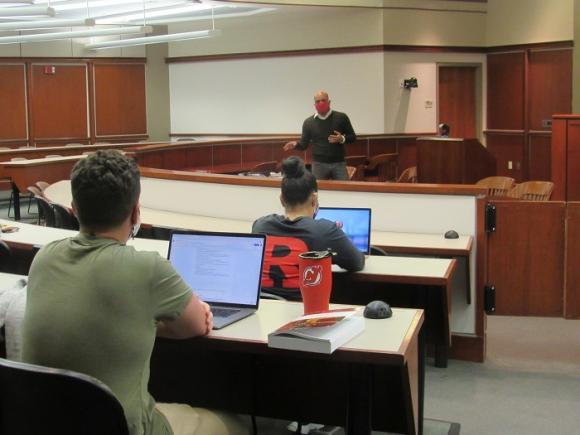Browsing the Complexities of Test Presentations: Tips for Seamless Delivery and Engaging Disagreements
In the world of legal procedures, the art of test discussion stands as a critical determinant of success. The complexities fundamental in trial presentations need a fragile equilibrium of skill, ability, and method.

Comprehending Test Purposes
To effectively navigate a trial, it is vital to have a clear understanding of the purposes that require to be achieved. Before stepping into the court, legal groups need to specify their objectives and desired outcomes. These objectives work as directing principles throughout the trial, shaping methods and affecting decision-making procedures.
Recognizing test purposes entails a thorough evaluation of the instance, lawful criteria, and the customer's benefits. Trial Presentations. It calls for a careful exam of the realities, recognizing crucial concerns, and preparing for prospective difficulties. By establishing certain and measurable goals, lawyers can customize their debates and discussions to straighten with the desired outcomes
Furthermore, a clear grip of test goals allows lawful groups to focus on proof, witnesses, and legal arguments successfully. It enables the development of a meaningful narrative that reverberates with the discretionary, strengthening the overall instance discussion.

Organizing Evidence Efficiently
Having a clear understanding of trial purposes lays the foundation for arranging evidence effectively in lawful proceedings. By straightening the presentation of proof with the desired end results of the trial, lawful teams can reinforce their disagreements and boost their persuasiveness.
One more crucial element in arranging evidence properly is establishing a sensible flow. Providing proof in a sequential and meaningful fashion can help construct a compelling narrative that sustains the legal debates being made. Additionally, utilizing aesthetic aids such as graphs, charts, or timelines can better enhance the organization of proof and aid in clarifying complicated partnerships or sequences of events.
Moreover, ensuring that all evidence provided is relevant and acceptable to the instance is essential. Inadmissible or unnecessary proof can diminish the strength of the disagreement and possibly hurt the reputation of the here and now party. A precise review and selection process should be undertaken to include only the most legally audio and impactful proof in the test discussion.
Crafting Convincing Stories
Crafting engaging narratives plays a crucial function in presenting influential my review here arguments throughout legal process. When building a story for a trial discussion, it is necessary to establish a clear story that highlights key factors and connects them in a systematic manner. By weaving with each other evidence, statement, and lawful disagreements right into a cohesive and convincing story, legal browse around this site experts can effectively promote for their customers and enhance the chance of a beneficial result in the courtroom.
Grasping Aesthetic Aids
Effective use aesthetic aids is essential to boosting the influence and clarity of test discussions. Aesthetic aids, when used purposefully, have the power to streamline complex info, strengthen vital points, and leave a long lasting impact on the discretionary. To master visual aids in test discussions, it is critical to guarantee that they are clear, concise, and appropriate to the debates being made.
When incorporating visual aids, such as charts, charts, pictures, visit this web-site or timelines, into a trial presentation, it is vital to maintain them aesthetically appealing yet specialist. The visuals need to enhance the spoken disagreements, supplying an aesthetic depiction of the info being gone over without overwhelming the audience with unnecessary details.
Moreover, practicing with the aesthetic help ahead of time is important to guarantee a seamless delivery throughout the test. Familiarizing oneself with the material, transitions, and timings of each visual help can aid preserve the flow of the presentation and prevent technological problems that may occur.
Delivering Impactful Closing Debates
An engaging closing disagreement acts as the culmination of a trial presentation, encapsulating the core narrative and persuading the court and jury towards a desirable choice. To provide an impactful closing argument, it is critical to succinctly summarize bottom lines, highlight the toughness of your situation, and deal with any kind of weaknesses in a strategic fashion. Begin by detailing the main debates that support your customer's setting, emphasizing why the proof presented throughout the test supports your story. It is vital to create a feeling of cohesion and clearness, guiding the discretionary in the direction of the desired final thought.
Additionally, including psychological allure can further strengthen your closing argument. Ultimately, a well-crafted closing disagreement ought to leave an enduring impact, engaging the court and court to rule in your customer's favor.
Final Thought
Finally, grasping test discussions includes comprehending goals, organizing evidence, crafting narratives, utilizing visual aids, and delivering impactful closing debates. By applying these approaches properly, legal representatives can offer their instance effortlessly and make compelling arguments in the courtroom. It is essential to navigate the intricacies of test presentations with precision and ability to attain success in legal proceedings.
By aligning the discussion of proof with the preferred outcomes of the test, lawful teams can reinforce their debates and improve their persuasiveness (Trial Presentations). To master aesthetic help in trial discussions, it is critical to make sure that they are clear, concise, and relevant to the debates being made
A compelling closing argument offers as the conclusion of a trial discussion, encapsulating the core story and convincing the judge and court towards a desirable decision. Begin by outlining the major disagreements that sustain your client's position, highlighting why the evidence offered throughout the trial sustains your narrative.In verdict, mastering test presentations entails understanding purposes, organizing proof, crafting narratives, making use of visual help, and delivering impactful closing disagreements.
Comments on “Leading Strategies for Developing Impactful Trial Presentations in Courtroom Settings”